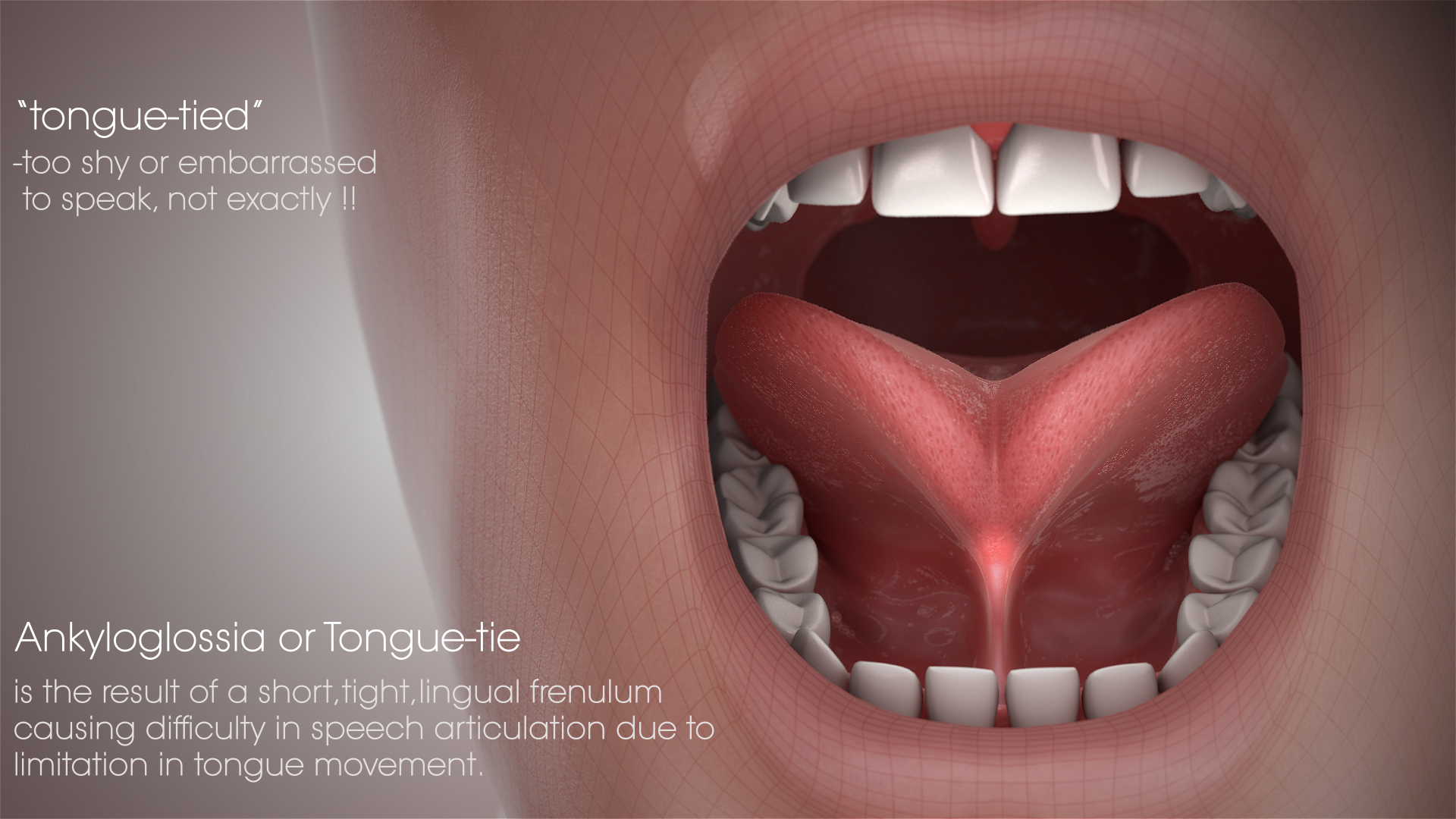Tongue-tie is a congenital (present at birth) condition that restricts the range of motion of the tongue. It is also called ankyloglossia. With tongue-tie, there’s a problem with the lingual frenulum. Lingual frenulum is a small stretch of tissue that connects the underside of your tongue to the bottom of your mouth. It might be too short and tight, thick or attached way up near the tip of the tongue.
The tongue needs to be able to reach most parts of the mouth to function efficiently. It needs a full range of motion to make sounds and also to be able to retrieve bits of food from the far corners of the mouth and help to swallow and keep the mouth clean. Tongue-tie may affect the way a child speaks, eats, or swallows.

Symptoms
Tongue-tie is mostly discovered when there are problems in breastfeeding the baby. While breastfeeding, the baby:
- Cannot latch properly
- Tends to chew more than suck
- Seems hungry all the time
- Makes a clicking sound while feeding
- Does not gain weight
- Feeds for long stretches
- Gets fussy when trying to feed
Apart from difficulties in breastfeeding, the other signs of tongue-tie are:
- Difficult in moving the tongue from side to side
- Difficulty in lifting the tongue to the upper teeth
- Difficulty in sticking out the tongue beyond the lower front teeth
- When stuck out, the tip of the tongue is heart-shaped or V-shaped
Causes
The strip of tissue, the lingual frenulum, that binds the tongue to the floor of the mouth usually separates before the baby is born. But in certain cases that does not happen and the lingual frenulum remains tied to the bottom of the tongue. This is the cause of a tongue-tie. There is no specific cause as to why it happens, but genes have an important role to play.
Treatment
There are two schools of thought regarding the treatment of a tongue-tie. Some doctors prefer to treat it as soon as possible. Other doctors, however, may recommend waiting because they expect the lingual frenulum to loosen up on its own over a period of time, thus resolving the tongue-tie condition. Or they might feel that the tongue-tie will not cause any problems. Surgical procedures such as frenectomy or frenuloplasty are recommended for the treatment of tongue-tie.
Frenectomy is a simple procedure in which sterile scissors are used to snip the lingual frenulum free. This procedure may not require anesthesia and is quick with minimal discomfort. The baby can breastfeed immediately after this procedure.
Frenuloplasty is a more extensive procedure than frenectomy and is done under general anesthesia with surgical tools. Frenuloplasty is usually done when the lingual frenulum is too thick for frenectomy.
Both the treatments are very successful and prevent eating, speaking, or dental problems from occurring. But like in any medical procedure, there are risks of bleeding, infection, damage to the tongue, and damage to the glands that make saliva.
Sometimes tongue-tie does not require any treatment because the lingual frenulum may loosen up on its own. But if that doesn't happen, then tongue-tie can lead to dental problems such as tooth decay, choking on foods when the baby starts to eat solid foods, trouble in saying sounds like r,l,s,t,z and a few others, difficulty in activities such as licking an ice cream cone, licking the lips, kissing or playing a wind instrument.
Disclaimer: The information in no way constitutes, or should be construed as medical advice. Nor is the above article an endorsement of any research findings discussed in the article an endorsement for any of the source publications.








